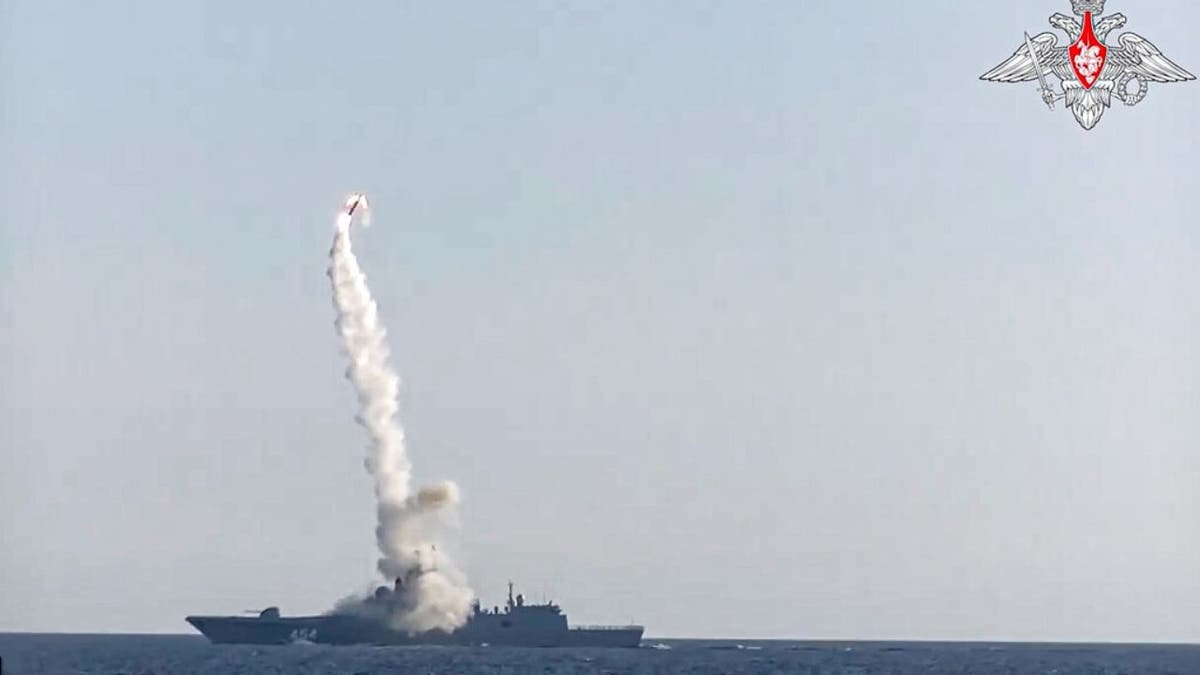Rep. Mike Turner: 'China sees us as an opportunity' since Biden's handling of Russia, Afghanistan
Rep. Mike Turner, R-Ohio, joined 'Sunday Morning Futures' to discuss how the Biden administration's handling of Russia and the withdrawal of Afghanistan has set a precedent for the relationship with China.
North Korea announced the completion of a successful hypersonic weapons test, adding to the list of agitators that continue to advance while America has stumbled in an area that has fast become the most important indicator of modern military capability.
The Wednesday launch marks the second successful test of a hypersonic missile by North Korea and the second test in two months. The new test proves North Korea has no intention of backing down and disarming and will instead press on with plans to modernize its arsenal.
The U.S. last completed a successful hypersonic weapons test in September, but a follow-up test in October ended in failure, adding a possible delay to full weapons testing until later in 2022, Reuters reported.

This photo provided by the North Korean government shows what it says a test launch of a hypersonic missile in North Korea Wednesday, Jan. 5, 2022. (Korean Central News Agency/Korea News Service via AP)
The U.S. Indo-Pacific Command released a statement that noted the test "highlights the destabilizing impact of the DPRK's illicit weapons program."
A senior Biden administration official told Fox News that officials remain aware of North Korea’s claims and have worked to assess the specific nature of the "launch event."
NORTH KOREA ANNOUNCES SECOND HYPERSONIC MISSILE TEST WAS SUCCESSFUL
"We are consulting closely with our allies and as we assess the recent event and as we determine next steps," the official said. "Our commitment to the defense of the Republic of Korea and Japan remains ironclad."

China President Xi Jinping, Russia President Vladimir Putin and North Korea Supreme Leader Kim Jong Un (Reuters)
"We take any new capability seriously, and as we’ve said, we condemn the DPRK’s continued testing of ballistic missiles, which violate multiple UN Security Council Resolutions and are destabilizing to the region and to the international community," the official added, stressing the need for dialogue in the face of "further provocations" from North Korea.
But the test presents a far more worrying scenario that shows competitors and aggressors to the United States advancing in a field that U.S. Air Force Secretary Frank Kendall called a new "arms race" that has been "going on for quite some time."
US TROOPS COME UNDER ATTACK IN IRAQ AND SYRIA IN DAYS AFTER SOLEIMANI DEATH ANNIVERSARY
Pentagon spokesperson LTC Marty Meiners echoed the White House statement and told Fox News that officials plan to provide a detailed background on current hypersonic weapons capabilities in the coming week.

In this photo taken from video distributed by Russian Defense Ministry Press Service, a new Zircon hypersonic cruise missile is launched by the frigate Admiral Gorshkov of the Russian navy from the White Sea, in the north of Russia, Russia, Monday, July 19, 2021. (Russian Defense Ministry Press Service via AP)
China and Russia also reportedly completed successful hypersonic weapons tests, involving a mix of hypersonic vehicles and missiles capabilities.
China’s test in August 2021 reportedly surprised U.S. military officials with how advanced the technology was. One individual told The Financial Times that officials had "no idea" how China achieved the development of a glide vehicle that circled the globe and nearly hit its target.
BIDEN ADMIN ROILED BY CRISES ON AFGHANISTAN, BORDER, INFLATION, COVID - HEADS YET TO ROLL
Such a weapon would potentially allow China to deploy weapons at altitudes that would prove difficult for U.S. satellites to track, creating a difficult circumstance for U.S. defensive capabilities.
And Russia tested its Zircon hypersonic weapon in November, hitting a practice target some 215 nautical miles away.
CLICK HERE FOR THE FOX NEWS APP
The U.S. therefore conducted a new weapons test in September, completing its first successful hypersonic weapons test since 2013, according to Reuters. The eight-year gap may prove deadly, but the U.S. has touted the capability of its Hypersonic Air-Breathing Weapon Concept (HAWC), which the Air Force says can operate at Mach 5 speeds "and beyond."
But a follow-up test in October of a hypersonic glide vehicle ended in failure. The Army instead touted the successful tests of several components, such as a hypersonic booster rocket motor, which will put the country "on schedule" to complete a flight test of a full common hypersonic missile, which is slated to happen before autumn 2022.
The Associated Press contributed to this report.

